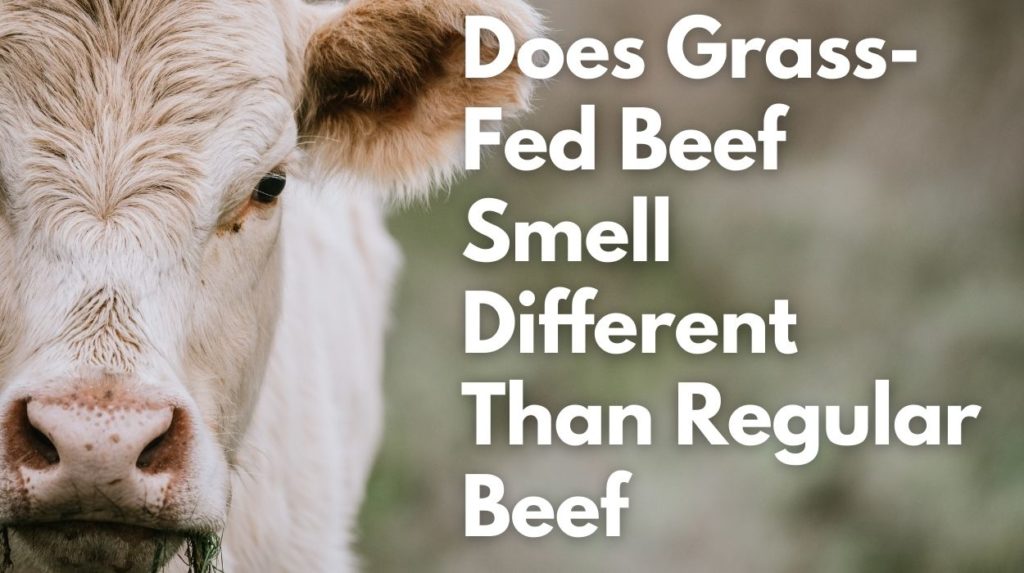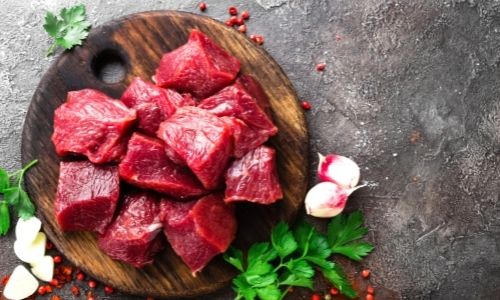
Regular beef eaters understand the difference between grass-fed beef and the regular kind. They often find the former one to have a certain distinctive smell, more like leathery, gamey, or fish-like.
Moreover, you will also notice differences in terms of taste as well. But what would a grass-fed beef taste like? Can you incorporate it into your regular recipes? If such questions are lingering in your mind, you have come to the right place.
Let’s understand the main differences between grass-fed beef and regular beef so that you can make an informed decision.
What makes grass-fed beef smell & taste different?
Some commonly used descriptors of grass-fed beef are meaty and gamey, meaning it tastes and smells stronger and wilder than most other meats.
A meat’s flavor usually heavily depends on its fat content. Fat is soluble, unlike muscle. When the fat melts down, it smears the muscles with its flavors. If the cattle have been feeding off the grass, it tends to have less fat content inside the muscles, which ultimately gives the beef its meaty flavor.
Another thing that sets the taste apart when it comes to grass-fed beef is the nutrition content. It is richer in omega-3 fatty acids, making it taste like fish. It is also rich in antioxidants and vitamins.
Is grass-fed beef better?

Grass-fed beef is considered a fine delicacy. It has more palatability and is generally a healthier option because of less intramuscular fat. There’s still a preference for corn-fed beef among farmers because corn-feeding makes the cattle fatty.
Grass-fed could also be better for the environment in the long run because plants can curb carbon emissions. At the same time, critics argue that mass-produced livestock would require more land to be fed in this manner.
When it comes to the taste, you might find that it all boils down to each individual’s preference.
How do you pick out good grass-fed beef?
Grass-fed meat can vary in quality depending on how the farmers raise the cattle. These are some things you should be looking out for when shopping for beef:
Opt for the grass-fed label
Synthetic items were presumably not offered to grass-fed livestock or were not their main nutritional supply. However, not every bunch of grass-fed cattle is given grass throughout the year.
Keep in mind that specific stickers have a higher level of authenticity than others. You would have to do ample research about your meat supplier.
Choose grass-fed labeling from nearby farms whenever feasible. You may pose specific questions that labeling might not be capable of answering.
Look for the “organic” sticker
To certify beef as organic, it should be void of any artificially added hormones. The cattle are also supposedly fed food with minimal antibiotic and chemical content.
Some companies are known to use cruel practices while raising cattle, which is wrong ethically and affects the quality of their product.
Check for the “pasture-raised” sticker
Grass-fed does not always translate to pasture-raised. Ethically speaking, cattle allowed to roam around the pasturing land freely are better. Cows that have to wait a long time to be fed undergo a lot of stress. Not having a good place to rest also causes the cows a lot of difficulties.
Such stress affects the texture and tenderness of the beef.
How to shop for good beef?

Look for visible signs that the beef is of good grade when purchasing it.
1. Cuts
The margins of higher-quality steak will be brown. It’ll comprise yellow-colored fat, which is apparent.
2. Color
Beef is available in various colors, from maroon to dark brown. The pigment isn’t always a reliable indicator of freshness. Search for beef that is 80% leaner when the steak is labeled regarding levels of fat.
3. Smell
The smell should be fine, as you would expect from any other standard piece of meat. A good cut of beef wouldn’t produce an odd odor. It should not have a rotten or nasty odor.
Healthy meats should have a faint meaty aroma but will never be off-putting. If the smell is unbearable, the flesh has most likely gone bad. Avoid buying it.
FAQs
Why is corn-fed beef bad?
Beef from cattle reared solely on pasture has far less fat than those fed on corn. Deadly E. coli germs are produced due to this abnormal corn diet.
Why does grass-fed beef cost more?
When given an all-grass feed, grass-fed calves take much longer to attain their cutting bodyweight. The rancher will invest heavily in producing beef this way.
Conclusion
Grass-fed beef will always taste and smell different, setting it apart from grain-fed beef. There may be changes in the overall quality of beef depending on how the cattle were raised on the farm.
Grass-fed beef is healthy and, according to popular belief, good for the environment. Although grass-fed beef does have a different smell, you’re not supposed to tolerate any rotten-smelling meat.
Please share your thoughts with us in the comments below!



